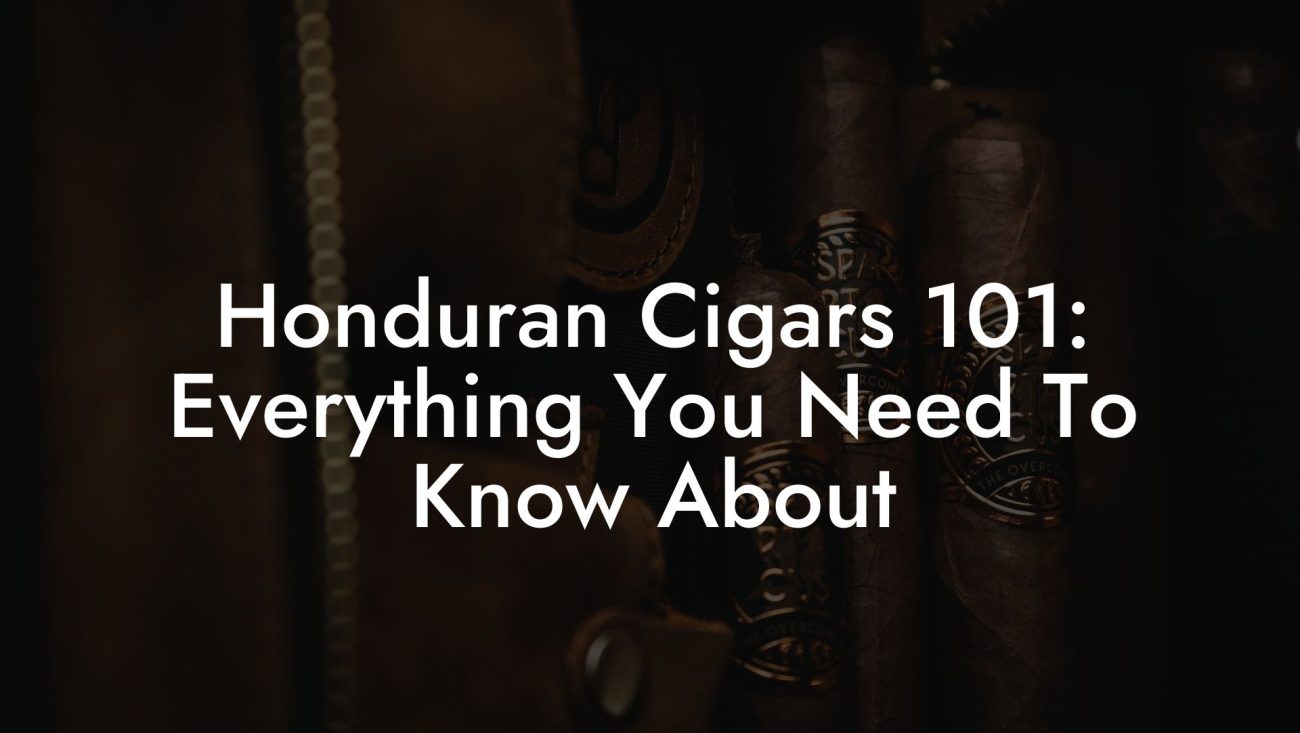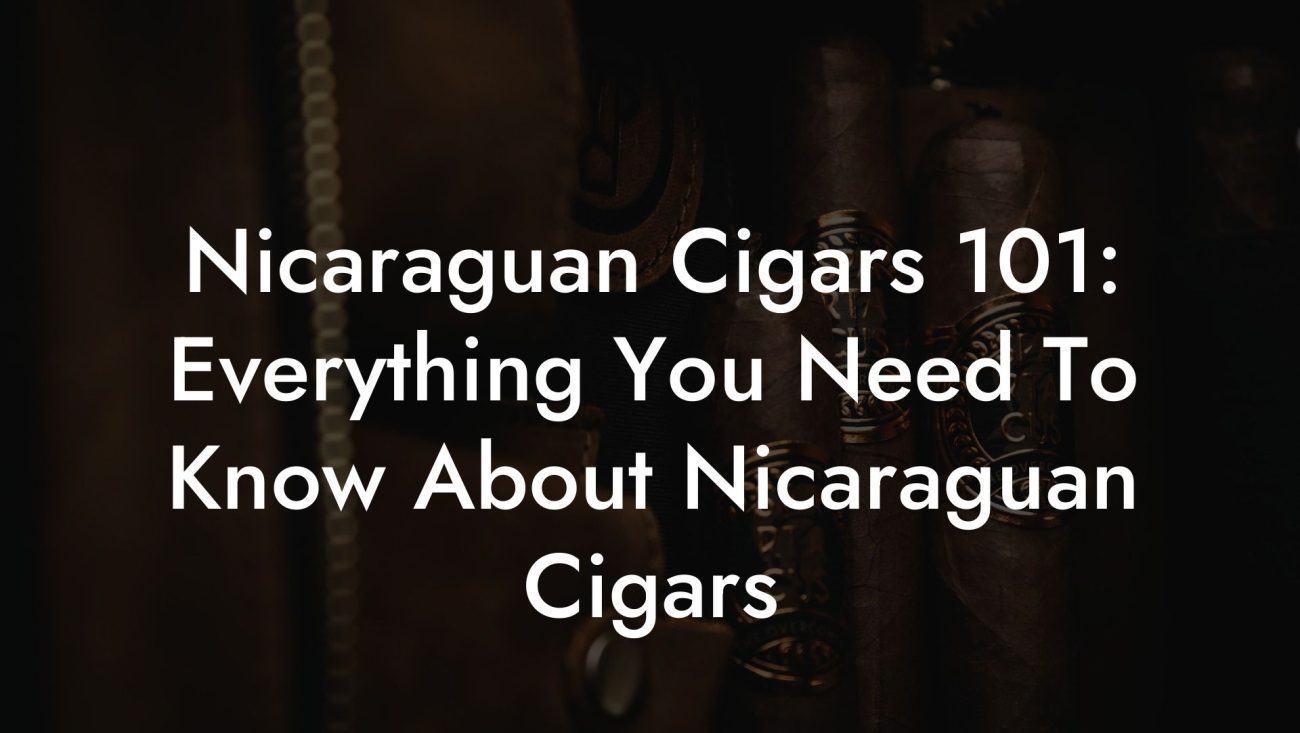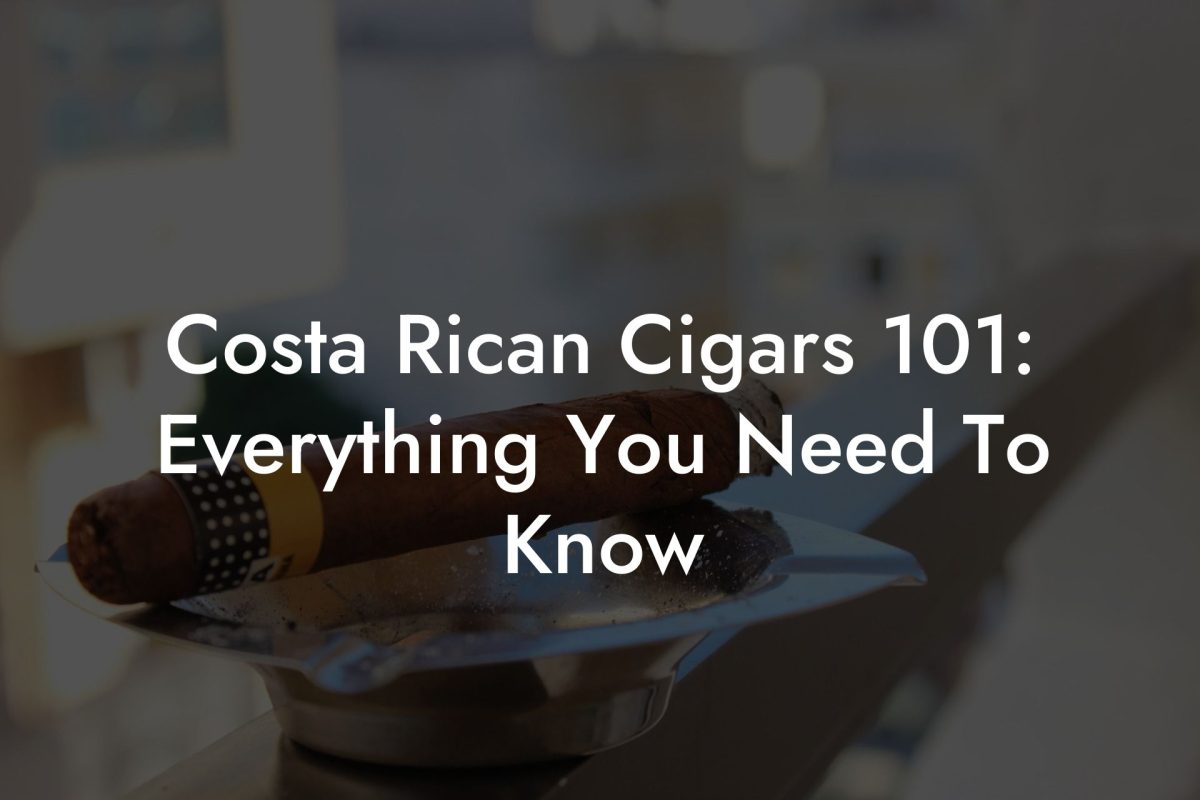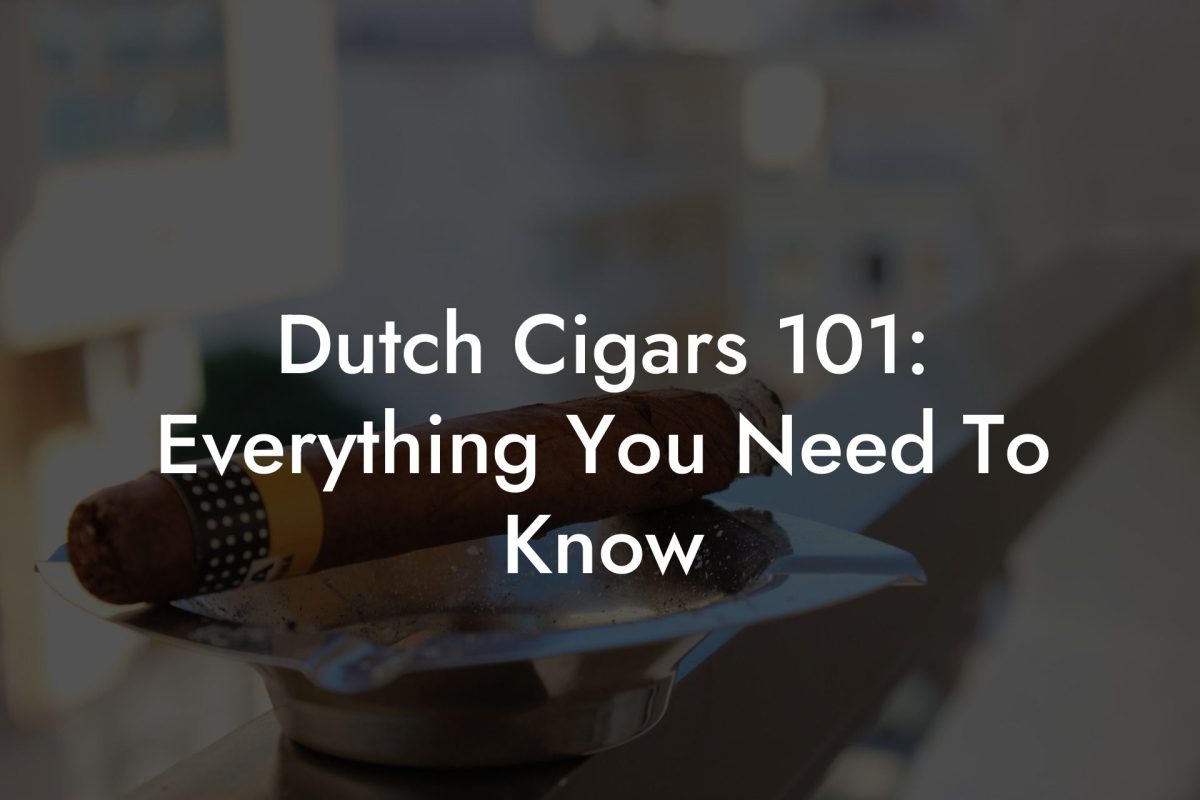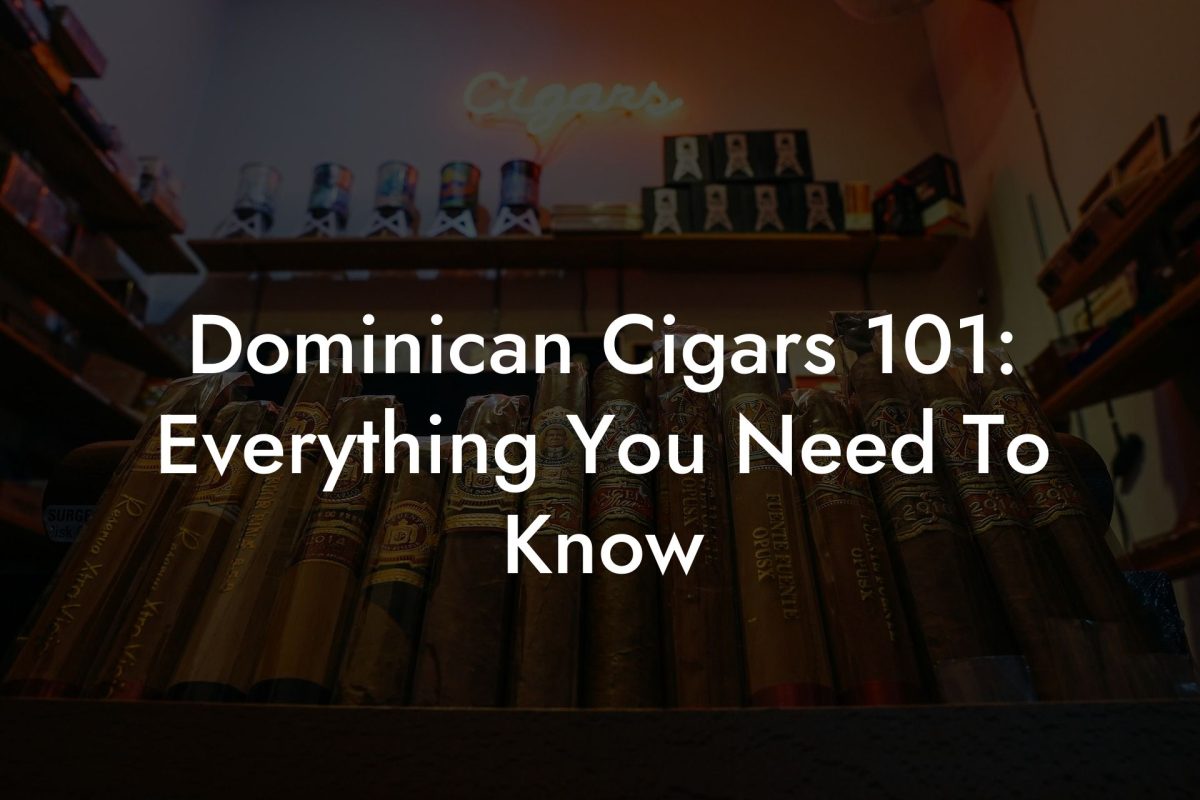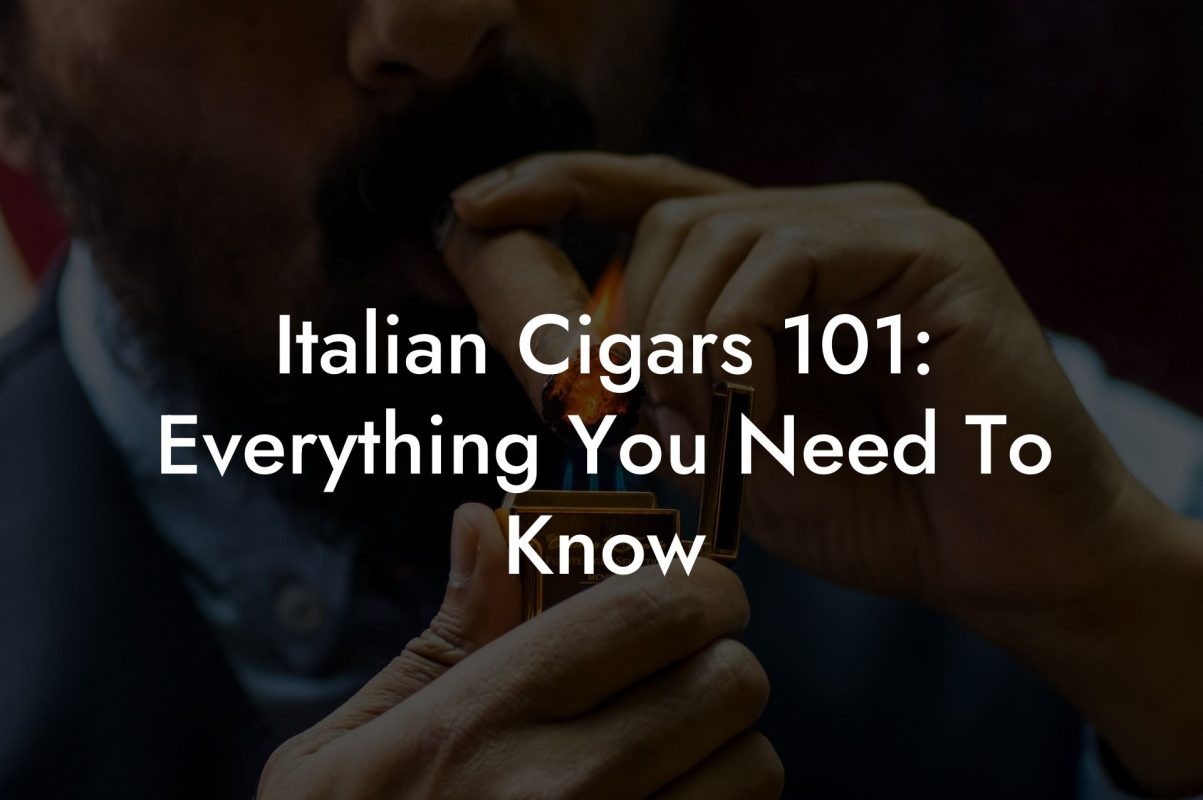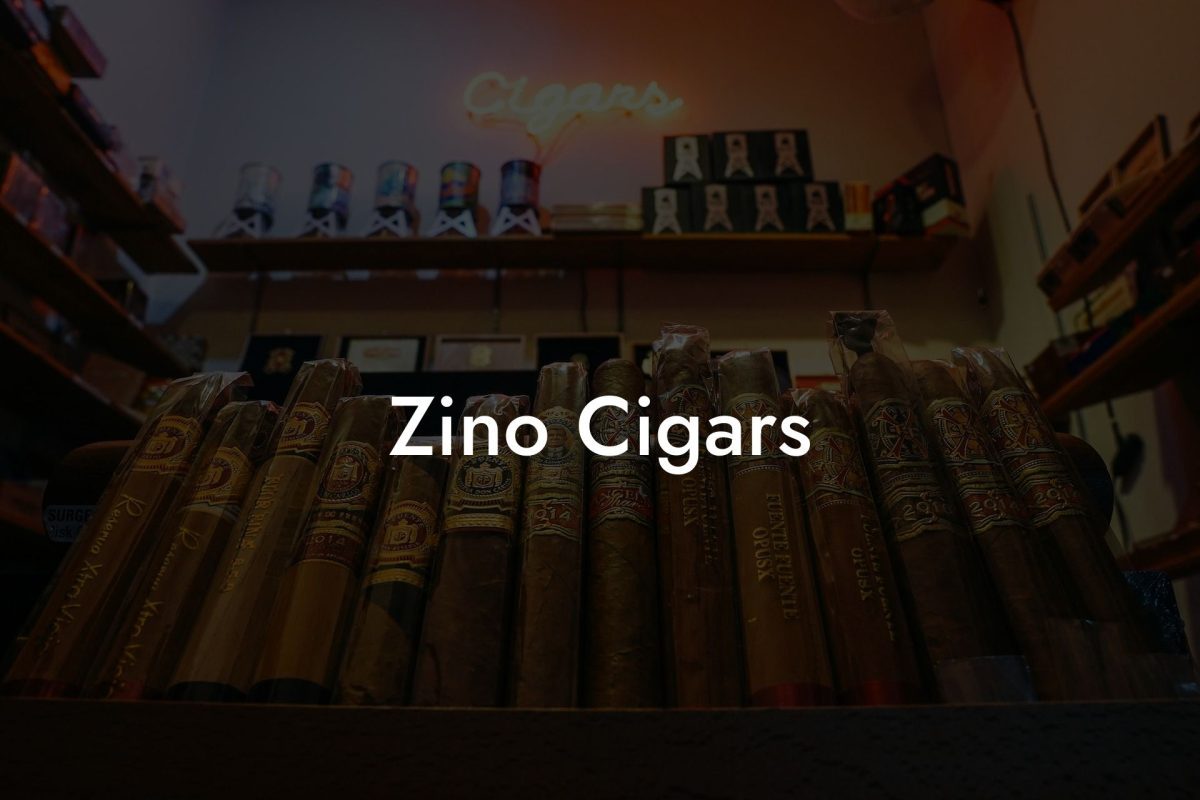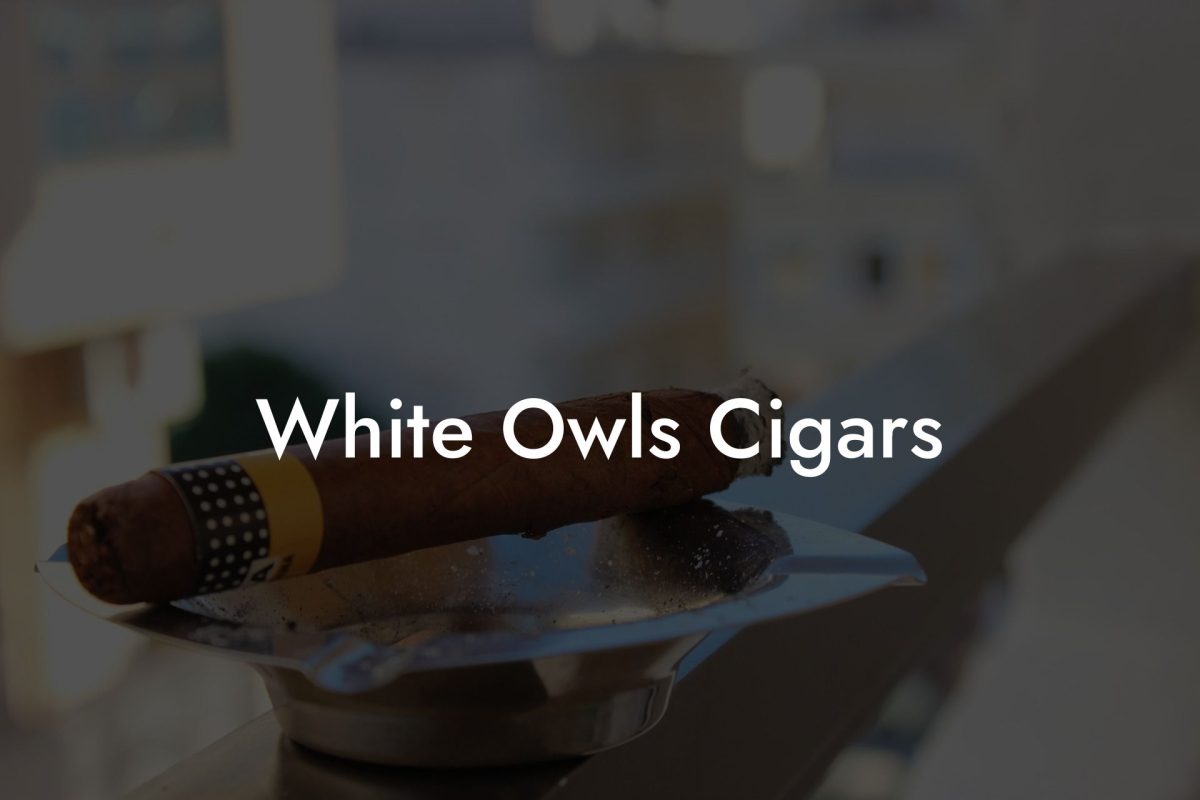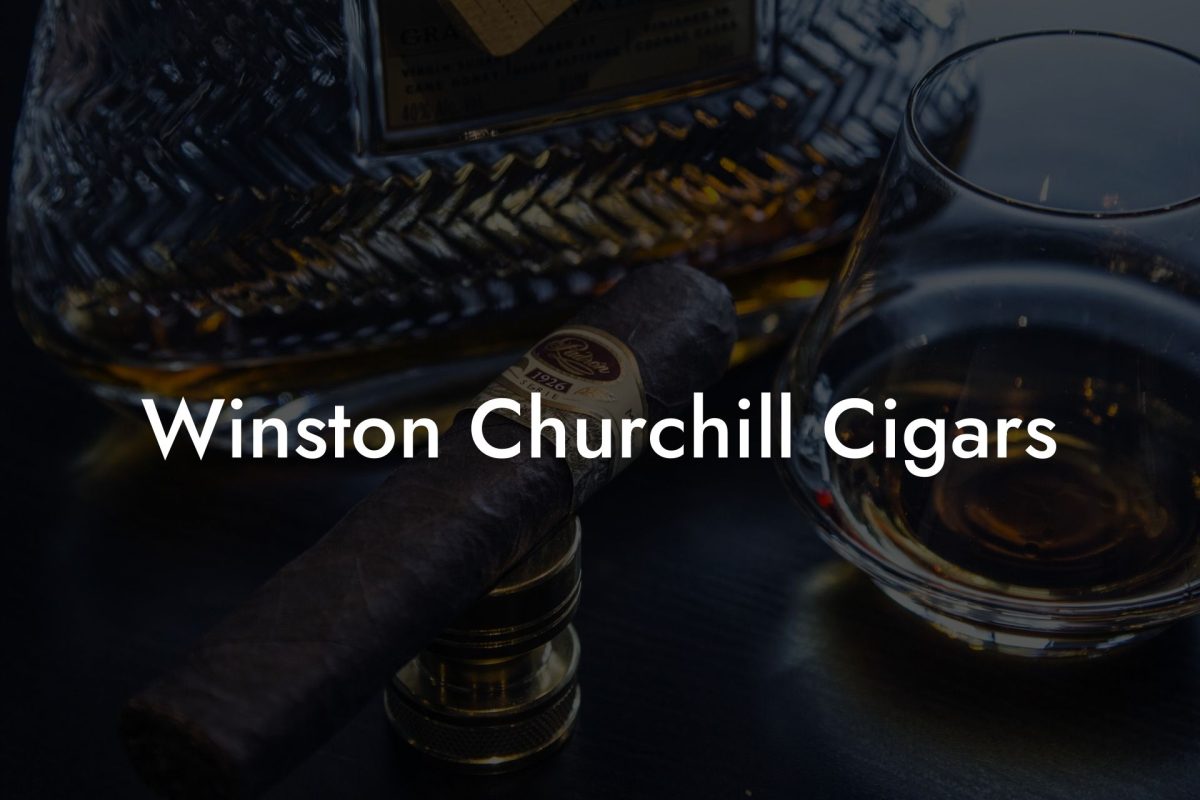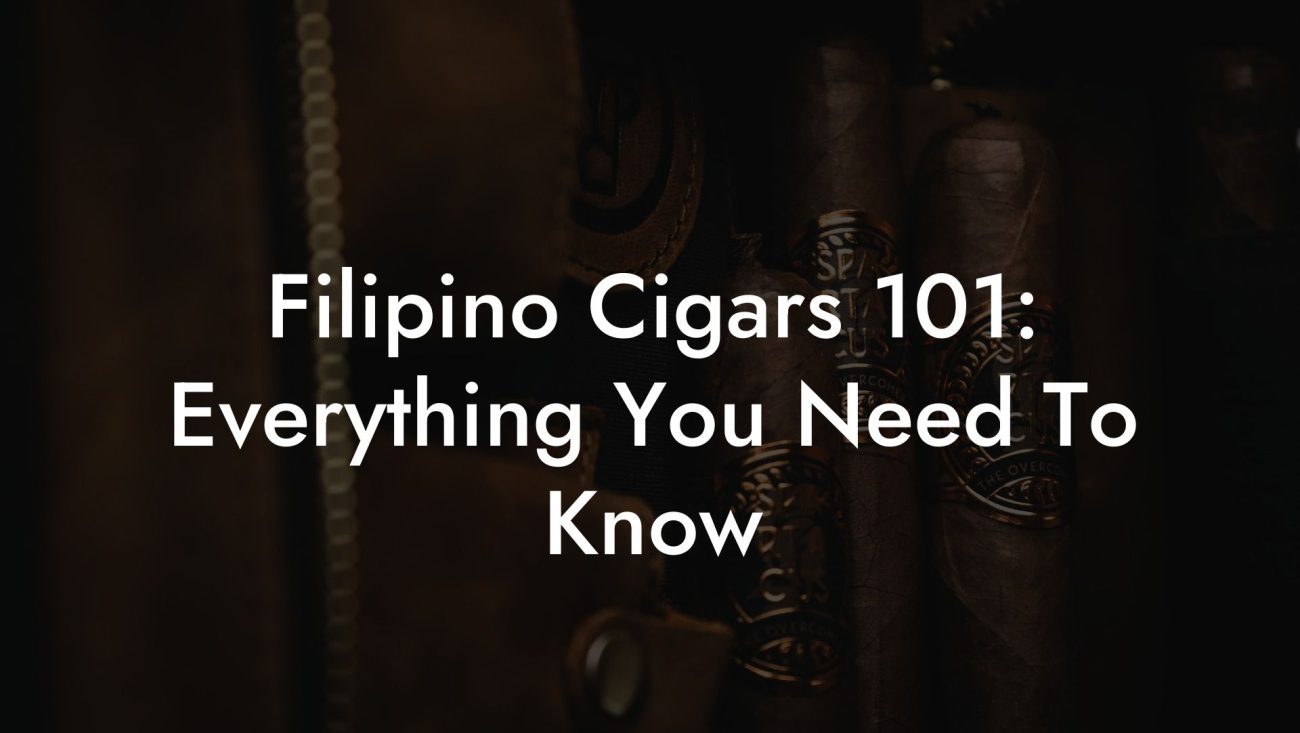Smoking stories have always sparked debates at every party and family gathering, and if you’ve ever caught yourself scrolling past another meme asking “Are cigars safer than cigarettes?”, you’re not alone. Let’s kick off a smoke-filled adventure through the swirling clouds of myths, science, and culture that surround this age-old question, only with the refreshingly unfiltered, Gen-Z-approved twist. Buckle up, because we’re about to dive into the nitty-gritty of cigar vs. cigarette, peeling back layers of marketing smoke and mirrors, scientific studies, and a whole lot of “wait, what?” moments.
Are Cigars Safer Than Cigarettes Table of Contents
Defining the Smoke: What Exactly Are Cigars and Cigarettes?
The Science Behind the Smoke: Chemical and Health Considerations
Debunking the Myths: Are Cigars Really the “Safer” Option?
Cultural Trends and the Social Scene: The Allure of Cigar Smoking
Taste, Ritual, and Identity: Why People Choose Cigars Over Cigarettes
The Health Impact Unwrapped: Short-Term and Long-Term Risks
The Role of Frequency: Occasional Enjoyment Versus Habitual Use
Secondhand Smoke and Its Ripple Effects
Regulation, Marketing, and the Tobacco Industry’s Spin
Resources and Community Support: Your Next Steps
Your Path Forward: Embracing Informed Choices and Lifestyle Balance
Defining the Smoke: What Exactly Are Cigars and Cigarettes?
At first glance, a cigar and a cigarette might seem like distant cousins in the smoking family, but scratch the surface and you’ll discover they’re as different as a vintage sports car and a beat-up skateboard. Cigarettes are thin and quick, engineered for mass production and near-daily consumption, while cigars are thick, unfiltered, and often enjoyed as a premium experience with a slow burn, almost like savoring a fine whiskey. Both deliver nicotine and a host of chemicals, yet their methods of production, usage patterns, and even cultural connotations create a complex narrative that begs the question: Are cigars really the “safer” alternative?
Manufacturers of cigarettes have long adopted an assembly line approach with a focus on convenience and strong, consistent nicotine hits. On the other hand, cigars are crafted with an artisan’s touch, using aged tobacco wrapped in a tobacco leaf. This manual process, coupled with the ritualistic art of cigar smoking, from cutting to lighting and finally, the slow puffing, gives it an allure steeped in tradition and luxury.
When you light up a cigarette, it’s often about satisfying a quick craving on a hectic morning. In contrast, a cigar is frequently associated with celebration or a moment of mindful indulgence. But while the motivations behind the usage can differ vastly, both forms of smoking deliver nicotine, tar, and a cocktail of chemicals that our bodies don’t exactly appreciate. The question then becomes not just semantics, but matters of health, habit, and culture.
The Science Behind the Smoke: Chemical and Health Considerations
Let’s break it down with a little chemistry magic. Cigarettes generally produce a steady stream of smoke loaded with thousands of chemicals when burned. Among the most notorious culprits are nicotine, tar, carbon monoxide, and various carcinogens that can wreak havoc over time. Cigars, while similar in the sense that they also release nicotine and harmful compounds, do so under slightly different circumstances thanks to their larger size, longer burn time, and the fact that many cigar aficionados avoid inhaling too deeply.
It’s important to note that the dangers of smoking derive not only from what’s in the smoke, but also how it’s used. Cigarette smokers typically inhale directly into their lungs, ensuring a quick and potent nicotine hit. Cigar smokers, however, often enjoy the flavor and aroma by keeping the smoke in their mouths, a practice that might reduce lung exposure while increasing risks for oral and throat cancers. This important distinction is a double-edged sword in health discussions.
Recent studies have shown that while the risk profile of cigars is slightly different, it’s far from accurate to say one is completely “safer” than the other. Both contain a host of toxins, and the long-term exposure to these chemicals can lead to serious health issues including cardiovascular diseases, various types of cancer, and respiratory problems. So, whether you’re puffing on a cigarette during a coffee break or savoring a well-crafted cigar after dinner, your body is still taking in harmful substances.
On the science front, it’s all about dose and duration. Regular, heavy cigarette consumption is notorious for its cumulative damage, while cigar smoking, often less frequent, may result in different types of risks. However, the intermittent “luxury” puff doesn’t automatically translate into safety. Studies recommend that any form of tobacco use should be approached with caution, with an emphasis placed on understanding exactly what chemicals you are inhaling and how they may affect your long-term health.
Debunking the Myths: Are Cigars Really the “Safer” Option?
If you’ve been tempted by the well-dressed image of a cigar aficionado, imagine a suave individual in a leather jacket blowing rings of smoke into a dusky night, chances are you’ve heard the rumor: “I only smoke cigars; they’re safer than cigarettes.” But let’s cut through that hazy narrative. It turns out that many of these claims are more about marketing magic than solid scientific backing.
The myth of the “safer cigar” might have originated from the perception that because cigar smokers often don’t inhale deeply, they reduce the risks of lung cancer. However, this selective puffing may spare your lungs, but it increases the exposure of your mouth, throat, and esophagus to carcinogens. Think of it like swapping one form of damage for another.
Moreover, cigars are not free from the burden of secondhand smoke, which can contribute to the same harmful exposures. Epidemiological studies have indicated that cigar smoke carries a significant risk and is linked to diseases similar to those caused by cigarettes, albeit through different exposure pathways. So, while the notion of “safety” might seem appealing, especially when paired with the relaxed vibe of a slow-burning cigar, it simply does not hold up under scientific scrutiny.
To add another twist to the tale, the nicotine content in cigars can be comparable or even higher than that found in cigarettes. This means that while you might not be breathing in the smoke as deeply, the potential for addiction is very much present. The big takeaway? Switching from cigarettes to occasional cigar indulgence might alter the risk profile slightly, but neither option can truly be labeled “safe.”
In essence, the answer to our titular question leans towards a definitive “no”, cigars aren’t a safe haven compared to cigarettes; they’re just a different shade of risky.
Cultural Trends and the Social Scene: The Allure of Cigar Smoking
Let’s face it, smoking isn’t just about the health debate; it’s also entrenched in cultural symbolism, lifestyle choices, and even a bit of theatrics. Cigars, in particular, have long been associated with celebrations, achievements, and high-society gatherings. From movie scenes of suave mobsters to the candid Instagram posts of influencers showcasing their premium smokes, cigar smoking continues to hold a certain mystique.
For many millennials and Gen-Zers, the allure of a cigar isn’t about rebellion or defiance, it’s about vintage aesthetics, artisanal crafting, and the slow-paced enjoyment of life in an otherwise fast-paced world. Social media platforms are awash with trendy cigar lounges, pop-up cigar events, and curated smoking experiences that emphasize the artistry behind the accessory. It’s a lifestyle statement, a nod to timeless coolness, and sometimes even an Instagram filter for success.
However, amid all the glamour and suave imagery, it’s crucial to remember that the cultural cachet doesn’t cancel out the underlying health risks. Just because something appears in glossy magazine spreads or vintage ads doesn’t mean it’s free of hazards. In fact, the deliberate pace of cigar smoking might even lull users into a false sense of security as they “savor” each puff.
The modern trend of combining mindfulness with leisurely cigar sessions is a fascinating cultural evolution. You might see influencers captioning their posts with hashtags like #MindfulSmoking, #CigarChill, or #SmokeAndReflect, all while enjoying a sophisticated ritual that has been honed over centuries. Yet, behind the stylized images and carefully curated aesthetics lies the simple fact: the act of smoking tobacco, by any method, exposes you to a host of harmful chemicals and risks.
It’s exactly this juxtaposition, between cultural glam and health reality, that makes the topic endlessly fascinating and ripe for debate. So, while you might find yourself enchanted by the ritual and social cache of cigar smoking, it’s worth asking: is the sophistication worth the risk?
Taste, Ritual, and Identity: Why People Choose Cigars Over Cigarettes
If you’re thinking about the lifestyle ingrained in cigar smoking, it isn’t hard to see why. The experience is much more than just lighting up; it’s a ritual, a moment of pause in a hectic day, or even an emblem of personal style. Let’s break this down: when you choose a cigar, you’re not simply smoking, you’re engaging in an elaborate sensory experience that includes the rich aroma, the texture of the tobacco, and even the sound of that satisfying ember glow.
For many smokers, the ritual is key. Lighting up a cigar often involves careful cutting, selecting the right type of cigar from a humidor, and then savoring a gradual, deliberate burn. Each step transforms the act into a meditative process. In contrast, the everyday cigarette is all about speed and convenience, a quick fix to curb that nicotine craving during a break.
Identity factors, too, play a crucial role. Cigars are often marketed as a symbol of success, maturity, and sophistication, a far cry from the “everyday” image of a cigarette. Some users might even feel that choosing a cigar aligns with their aspirational image, defining themselves as connoisseurs rather than compulsive users.
Of course, this sense of identity and sophistication doesn’t extend to the realm of health metrics. The allure of slow, indulgent smoking can sometimes mask the underlying truth: that the inhalation of tobacco smoke (even occasionally) carries risks. That said, the ritualistic nature of cigar smoking makes it a unique subject of study within the tobacco debate, with cultural narratives often blurring the lines between a pleasurable pastime and a potential health hazard.
Ultimately, the choice between a cigar and a cigarette isn’t just about the physical act of smoking, it’s about what that act represents. For some, it’s a form of self-expression, an intimate nod to cultural tradition, or even an artistic appreciation of craft. But while this perspective shines a light on the lifestyle and aesthetic components, it also underscores the importance of weighing image against reality.
The Health Impact Unwrapped: Short-Term and Long-Term Risks
Whether you’re puffing on a cigarette on your morning commute or indulging in a celebratory cigar at a rooftop party, understanding the health risks is critical. Let’s dive into what the science says about both forms of smoking.
In the short term, cigarette smoking is notorious for triggering immediate effects such as increased heart rate, raised blood pressure, and reduced oxygen intake. The rapid nicotine delivery system forces the body to work overtime, and for regular smokers, these spikes can become alarmingly routine. Cigar smoking, although often reserved for special occasions, is not exempt from these effects. Even if you’re not inhaling deeply every time, the nicotine absorbed through the lining of your mouth ramps up your heart rate and boosts your blood pressure.
Long-term health risks are where things get really gnarly. Extended cigarette use is closely associated with chronic obstructive pulmonary disease (COPD), cardiovascular disease, and a litany of cancers, not just lung cancer but also throat, bladder, and pancreatic cancers. Cigars, despite their intermittent use among many aficionados, have been linked to similar conditions, albeit with a different risk profile. For instance, regular cigar smoking can increase the incidence of oral and esophageal cancers.
It’s also worth noting that the pattern of use matters immensely. The cumulative exposure to harmful chemicals remains a significant concern whether you’re a frequent cigarette smoker or an occasional cigar enthusiast. In both cases, the damage is incremental, building up over time in ways that can catch you completely off guard decades down the line. The chemistry of combustion ensures that each puff delivers a dose of toxins and corrosive chemicals that your body ultimately struggles to counterbalance.
For the Gen-Z and millennial crowd, the allure of “occasional” use can be dangerously deceptive. There’s a tendency to think that a once-in-a-while cigar session might be a harmless indulgence, especially when the cultural narrative paints it as a sophisticated exception rather than a daily habit. But the science warns us that even infrequent exposure can have lasting effects on cellular health, making it imperative to approach every puff with a healthy dose of skepticism.
In the end, both cigarette and cigar smoking carry risks that can scale with frequency and intensity. Balancing the immediate pleasures of a leisurely smoke against the potential for long-term health complications is a personal equation that warrants careful consideration and honest research.
The Role of Frequency: Occasional Enjoyment Versus Habitual Use
One of the key considerations when comparing cigars and cigarettes is the frequency of use. Many cigar smokers tout their habit as an occasional hobby, a celebratory indulgence rather than an everyday routine. Meanwhile, cigarettes are designed for quick, repetitive consumption. But does this “occasional” label really translate to reduced risk?
In many cases, it might seem that the infrequent nature of cigar smoking offers a reprieve from the cumulative damage inflicted by daily cigarette use. However, even an occasional cigar session can pack a potent nicotine punch, enough to trigger the same cascade of reactions that lead to dependency. The human body is not a switch that resets after every smoke; it absorbs toxins and begins the repair process, and that starts the clock on chronic damage.
Furthermore, while it might be socially acceptable to treat cigar smoking as a leisurely luxury, the occasional indulgence may still serve as a gateway to more frequent use, especially among those who start to enjoy the ritual. It’s a slippery slope: what begins as an “occasional treat” may eventually evolve into a habit that’s as hard to break as any other form of nicotine addiction.
In summary, frequency matters, a lot. Even if you’re not lighting one up every day, the risks of exposure to harmful chemicals do not disappear entirely. Whether it’s a daily ritual or a rare indulgence, tobacco use always carries cumulative consequences that merit attention.
Secondhand Smoke and Its Ripple Effects
It’s not just the smoker who bears the brunt of tobacco’s toxic touch, secondhand smoke is a serious concern for everyone in the vicinity. The debate over whether cigars are safer than cigarettes sometimes forgets this key point: the environmental and interpersonal impact of smoke.
Cigarette smoke, known for its pervasive drift, can infiltrate confined spaces, making it a nuisance (and hazard) for non-smokers. Cigar smoke, with its prominent aroma and longer-lasting presence, can fill a room with lingering chemicals that affect innocent bystanders, even if they never lit up a single one.
For the young and health-conscious, this is a major issue. Whether you’re at a trendy lounge, a private party, or even a family gathering, exposure to secondhand smoke has been linked to respiratory issues, allergies, and even cardiovascular concerns in vulnerable populations like children and the elderly. So, the societal responsibility doesn’t end with personal choice; it extends to the impact on the community.
In our era of social awareness and mindful living, the repercussions of secondhand smoke are a reminder that the decisions we make often ripple out in ways we might not immediately notice. Whether it’s the waft of a cigar at a chic rooftop event or the ubiquitous cigarette smoke in urban settings, the environment around us is continuously being affected by our smoking habits.
It pays to think not just about the immediate sensory pleasure of that perfect puff, but also the broader implications for public health. After all, while the debate over whether cigars are “safer” may swirl around personal consumption, secondhand exposure is a communal issue that demands our attention.
Regulation, Marketing, and the Tobacco Industry’s Spin
If there’s one thing that ties together the narrative of cigars and cigarettes, it’s the elephant in the room, the powerful tobacco industry. Regulations, marketing strategies, and political lobbying have long shaped the way these products are perceived. Cigarettes, often the poster child for public health campaigns, have a well-documented history of regulatory crackdowns, while cigars have sometimes flown under the radar, partly thanks to their positioning as luxury items.
In recent decades, public health policies have targeted cigarette advertising with strict guidelines and graphic warnings. Meanwhile, cigars have managed to maintain an air of exclusivity and sophistication, a branding strategy that often downplays the comparable health risks. This disparity in marketing can warp the public’s perception, leading many to assume that cigars, a symbol of leisure and high status, are a benign alternative to the daily grind of cigarette smoking.
However, savvy health experts and independent studies are working overtime to cut through the propaganda. It’s crucial to recognize that despite the gloss of premium packaging and celebrity endorsements, both cigars and cigarettes are tobacco products that contain harmful chemicals. The regulatory landscape is evolving, and with it, the scrutiny on how these products are marketed and sold.
For the socially conscious consumer, staying informed about these tactics is as important as understanding the health implications. The next time you’re tempted by a stylish ad or a cult-classic aroma wafting from a lounge, remember that behind the glam, regulated oversight is working to ensure that you’re not being duped by centuries-old habits dressed in modern clothing.
Resources and Community Support: Your Next Steps
With all the heady discussions swirling around tobacco, it’s easy to feel overwhelmed and, frankly, a bit dazed by all the conflicting information. So, where do you go from here? The first step is arming yourself with knowledge from reliable sources and connecting with communities that support informed decision-making about smoking and health.
Start by exploring reputable health organizations such as the Centers for Disease Control and Prevention (CDC), the World Health Organization (WHO), and local public health departments that offer detailed research on tobacco risks and cessation strategies. Whether you’re trying to quit smoking, reduce your usage, or simply stay informed, these resources provide facts, statistics, and expert advice that cut through the smoke-screen of misinformation.
In addition to these institutions, consider joining online communities and forums where fellow smokers, ex-smokers, and health enthusiasts share their experiences and tips for making better choices. Facebook groups, Reddit threads, and even dedicated mobile apps can serve as invaluable support networks. These spaces not only offer practical advice, from quitting techniques to the best alternatives to smoking, but also a sense of community for those navigating the often-confusing world of tobacco products.
Another useful resource is engaging with local health workshops, seminars, and even cessation programs that cater specifically to young adults. Learning about alternatives, such as vaping (with all the caveats that come with it) or other nicotine replacement therapies (NRTs), might present you with a clearer path away from regular tobacco use. Sometimes the best action you can take is holding robust, informed discussions with your healthcare provider, who can tailor advice to your personal health profile.
Finally, if you’re caught in the alluring pull of cigars or cigarettes, ask yourself what you’re truly after, a moment of relaxation, social acceptance, or simply an escape from stress. Align your lifestyle with a range of outdoor activities, mindfulness practices, and creative pursuits that can offer the zing of excitement without the long-term health risks. Remember, informed choices are the foundation of a healthier, happier lifestyle.
Your next steps are simple: dive into trusted resources, join a community that supports healthy habits, and continue to educate yourself. Taking control of your health is a journey, and every bit of information you gather will empower you to make decisions that are right for your future.
Your Path Forward: Embracing Informed Choices and Lifestyle Balance
It might seem like the debate over whether cigars are safer than cigarettes is a binary choice, but the reality is far more nuanced. The truth is that no tobacco product is free from risk, and the best way forward is an informed, mindful approach. Recognizing the cultural allure, the scientific evidence, and the myriad of health considerations helps us step back and view smoking as more than just a habit, it’s a lifestyle choice with lasting consequences.
For those who are drawn into the world of tobacco, whether by the allure of a well-crafted cigar session or the quick relief of a cigarette, the path forward lies in understanding the underlying risks and making conscious decisions. Do you want to embrace a smoking lifestyle, acknowledge the risks, and take preventive measures? Or are you ready to break free from a habit that’s cloaked in cultural charm but marred by health hazards?
The good news is that every step you take toward informed decision-making contributes to a healthier life. Educate yourself continuously, seek support when needed, and balance the pleasures of life with the realities of health. Whether you’re in a sleek lounge savoring a cigar or taking a brisk walk to clear your head after a cigarette break, let your choices be guided by both research and realistic goals.
Ultimately, your journey toward a healthier lifestyle is uniquely yours. Embrace the freedom of choice, knowing that every informed decision, every moment spent replacing an old habit with a new, healthier one, paves the way to a future where you are in control. Empower yourself with knowledge, lean on community support, and commit to balancing the allure of indulgence with the necessity of self-care.
The conversation isn’t about labeling one option as completely good or completely bad, it’s about understanding the spectrum of risks and benefits and finding what works best for your life. With each new piece of insight and every supportive conversation, you’re crafting a path that respects both the pleasures of the moment and your long-term well-being. So, here’s to making informed, balanced choices that light up your life in all the right ways, without leaving you in a cloud of regret.
Frequently Asked Questions
Below are some pressing questions and answers that many have when examining the risks of cigars versus cigarettes. Dive into these FAQs to clear up common misconceptions and arm yourself with the facts.
1. Are cigars truly safer than cigarettes?
While some cigar smokers argue that because they often don’t inhale, cigars offer a safer alternative, research shows that cigars still deliver harmful chemicals that increase the risk of oral, throat, and other cancers. No tobacco product is entirely safe.
2. How does the method of inhalation affect health risks?
Cigarette smokers typically inhale deeply into their lungs, exposing themselves directly to toxins. Cigar smokers often hold the smoke in their mouths, which reduces lung exposure but increases risks for cancers in the mouth and throat.
3. Can occasional cigar smoking be considered safe?
Even infrequent cigar smoking carries risks since every exposure introduces harmful chemicals into your system. The notion of an “occasional treat” does not negate the health hazards involved.
4. What are the primary harmful substances in tobacco smoke?
Both cigars and cigarettes produce nicotine, tar, carbon monoxide, and a variety of carcinogens, all of which are linked to increased risks of cardiovascular disease, respiratory issues, and various cancers.
5. How can I make an informed decision about my smoking habits?
Start by reviewing reliable information from reputable organizations such as the CDC and WHO. Evaluate your personal health, consider the frequency of use, and consult with medical professionals to weigh the risks versus the benefits.
6. What are the risks of secondhand smoke from cigars?
Secondhand smoke from cigars can be just as harmful as that from cigarettes, exposing non-smokers to toxins and increasing the risk of respiratory issues and other health problems.
7. Is there a safe threshold for tobacco exposure?
There is no universally safe level for tobacco exposure. Even minimal exposure can lead to cumulative health risks over time.
8. How do cultural perceptions of smoking influence its use?
Cultural images and marketing can glamorize smoking, making products like cigars appear sophisticated. However, these portrayals often downplay the scientifically proven health risks associated with tobacco use.
Have more questions? Remember, your health is a personal journey. Reach out to healthcare providers and trusted community resources for further guidance.
Your Journey to Informed Choices and a Balanced Life
In the end, the grand debate on whether cigars are safer than cigarettes is more than a matter of puff count or public image, it’s a call to embrace informed decision-making and personal accountability. Tobacco, regardless of its form, carries health risks that science has documented time and time again. Both cigars and cigarettes serve as reminders that pleasure and risk are tightly intertwined, and that every choice has consequences.
This pillar page isn’t here to shame anyone’s choices or to cast judgment on a form of self-expression that has been part of humanity’s cultural fabric for centuries. Instead, it’s an invitation: a call to look behind the glossy marketing, to peer into the chemical make-up of your favorite smoke, and to connect with trusted health information that empowers you to make choices aligned with your life goals.
Whether you’re a seasoned smoker who enjoys the ritual of a fine cigar or someone who’s never lit one up but is curious about the comparisons, knowing the facts helps you navigate a world full of half-truths and sensational headlines. It empowers you to engage with your habits, and your health, with eyes wide open.
So, the next time you’re asked whether cigars are safer than cigarettes, you can confidently reply: “They’re just different shades of risky, and the best choice is to know what you’re getting into.” Embrace the nuances, enjoy the occasional ritual if you must, but always remember that your health is your most valuable asset. Keep questioning, keep learning, and let every puff be a reminder to live consciously.
Here’s to lighting up the path to a balanced, informed life, one where every decision is backed by knowledge, supported by community, and powered by your personal commitment to well-being. Your journey to enlightened choices starts now.


